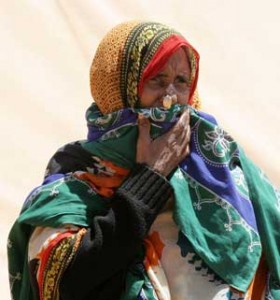Ancient Saho speaking people are descendants of ancient Kushites. The term Kushite derives from the ancient peoples of North East Africa, which started to live in this part of Africa since more than 5000 B.C., with their own culture and language. The ancient Kushite peoples are those who spoke languages of the Kushite branch of the Afro-Asiatic (also known as Hamito-Semitic) family. They are the indigenous peoples of the present day Eritrea, Sudan, Ethiopia, Somalia and Kenya.
The history of over 5000 years of Kushitic civilization is preserved through the interconnections of Kushitic culture and languages. The Kushitic languages are divided into 3 major subgroups. These include: (a) East Kushitic languages (Saho, Afar, Somali and Sidama), (b) Central Kushitic or Agaw language (such as Bilen ), (c) South Kushitic languages in Kenya and Tanzanya.
The modern day Kushites, such as descendants of ancient Saho speaking people, are descendants of ancient Kushites who ruled Egypt in 25th dynasty and played a central role in Africa’s greatest and oldest civilisation at Meroe, the present day northern Sudan and lower Egypt.<\font>
Ancient Saho speaking people, as descendants of ancient Kushites, have left strong traceable evidence of their over 5000 years of rich history.
The traceable evidence include ancient rock paintings, monuments steles, ruined building, ancient pottery … etc. Some of these are found in Saho land such as in (Qohaito, Kaskase, Adulis (Adola/Ado-Lai ), Balaw Kalaw, ruins of Matara ).
Ancestors of Saho people
Historians and anthropologists as yet to accurately determine the exact archaeological time in which Kuchitic languages started to split until they become as separate languages as know in modern times. According to Bender and most scholars, the split of the Saho language from the rest of the East Kushitic language took place about four thousand years ago. It is believed that this split happened slowly and gradually over many centuries. Thus, Saho speaking ancestors started to become a separate ‘linguistic and ethnic group’ about four thousand years ago.
According to the oral traditions, the Idda, Kabota and Asa-bora are probably the most ancient known Saho kinship groups in the current Saho region. The Saho call these three kinship groups the guardians of the Saho land (Badho Ambalish or Badho Sugus in Saho language).
Oral traditions maintain that most Saho kinship groups came from diverse geographical origins and all adopted Saho, as their common language and all shared a common cultural heritage. Some Saho clans affiliate their origins to the Islamic dignitaries during Khilafa period including to one of the four Khalifas themselves. This should not be surprising, as well known in this region; peoples of the Horn of Africa and the Arabian Peninsula have a long history of human migration across the red sea, intermarriage, intensive linguistic, social and cultural exchange.
The people of Saho were known for their fierce opposition to any foreign invaders and colonial aggressors. Their oral history and poems tell many amazing stories of bravery and sacrifices they had offered over the last two centuries. They uncompromisingly and heroically defended their beloved land from repeated attempts of highland Abyssinian rulers to invade their land and had defeated Raas Araia and Raas Alula until the Italians invaded Eritrea in 1889.
The Saho, before the Italians’ occupation, were organised as clans, which have become federated into several major tribes. They had chiefs, their affairs being managed by councils of elders. This did not suit the Italians’ need for close control and accordingly they appointed chiefs in charge of each tribe: a measure, which made for administrative efficiency if not for popularity. These chiefs have been dismissed outright by the current government without introducing an alternative system.
Today, the risk of losing oral Saho history and heritage is greater than ever. It is like watching strong winds spreading great fire with little resistance hoping that we would be left with some of our possessions. Therefore there is an urgent call for spreading awareness and a massive responsibility upon every concerned individual and every organised Saho group of the current generation, wherever they are, to collate and document their ancestors’ history, however they can.
Historical towns in Saho land:
1) The port of Adolay (or Adulis in ancient geography)
In the 5th Century there was greater trade between north east region of Africa (see map below) and southern Arabia, mainly with the port of Saba. Adulis (Adola) became an important commercial centre in the region. Trade links increased and expanded from the Red Sea to the Mediterranean, with Egypt, Greece, and Rome, to the Black Sea, and to Persia, India, and China. By the 5th century BCE, the region was very prosperous, exporting ivory, gold dust, spices, and live elephants. It imported silver, gold, olive oil, and wine.
2) Hergigo (Dakano in Saho)
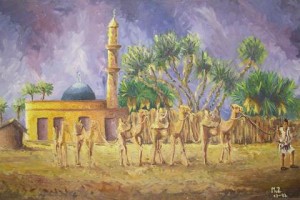
Oral traditions attribute the foundation of Hegigo to the Saho speaking group of Idda who in some type of association with elements of the holey Muslim cal Bayt Shaykh Mahmud, based in Zula, settled in Hegigo. The historic traditions shed some light on the early history of Massawa’s inhabitants. Some of the Massawa families that claim to have been among the first inhabitants of the town belong to Hassab Allah and Bayt Shaykh Mahmud. The Adulay family, who is thought of by many contemporary Massawans as among the early settlers, came from Zula. This data coincides with traditions of the foundation of Hegigo by originally Saho-speaking elements moving from the Zula region.
In the 6th century, Aksum was powerful enough to add Saba on the Arabian Peninsula to her empire. At the end of the 6th century, the Persians pushed Aksum out of peninsula causing Aksum to decline.
3) Qohaito
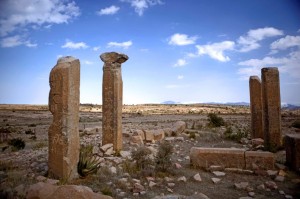
This ancient urban city lies approximately 14-15 Kilometres southeast of Asa Dik (Adi Keih). Its position at the crossroads of the main communication axes between the Red Sea area in the North-East and mainland of Kaskase, Matara and Axum in the South, made it one of the most political centres of the Kingdoms of ancient civilizations in the region.
4) Saanafè/Senafe
The ancient name for Senafe is Hakir. Senafe is also home to famous archaeological ruins of Balaw Kalaw. They are also known by nearby village called Matara. The ruins at Matara site are considered to be the third largest pre-Aksumite or Aksumite historical site.
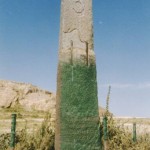
A western visitor who saw Senafe described it as a scene from wonder land. That is because the city seats on very pleasant plains and is encircled by most striking mountains. Arab Tarika from North, Dorho Coma from east, Farkila and Saim Coma from South, Matara Coma from South West and Ain Senafefrom West are key features of the town.
Senafe with the backdrop of Saim Coma 
The Kushite Civilisation
The Kushites belonged to a great civilization along the Upper Nile Valley during the second and first Millennium BC. They were the founders and the rulers of the 25th Dynasty in Egypt. The rise and the decline of the various Kushite kingdoms continued in various parts of North East Africa until the late 1880s. There are scientific indications that East Africa is a cradle of humanity whereas some prominent historians point out that North East African civilization predates Greek Classical Civilization.
The Kushitic civilization in the Upper Nile Valley of North East Africa reached its height during the second millennium BC. The Kushitic Kingdom located in Nubia survived well into the first millennium BC when it was finally defeated by the Nubian people. However, other historians argue that the Kushitic Kingdom flourished for six more centuries until the third century AD and made Meroe, the capital of its kingdom. On the other side, South East of Meroe, the Kingdom of Aksum was growing in power around the third century AD. In 350 AD, Axumite King Ezana was able to capture Meroe and undermined the Kushitic civilization until the Agaw (Zagwe), (Highland Kush Dynasty) recaptured it in 922 AD. The Kushitic speaking Agaw(Zagwe) dynasty ruled in North East Africa between 922 AD when Aksum declined, until 1270 AD.
Ancient beliefs of Kushites
The Kushites were followers of Amon (or Amun) who was the most prominent God in Nubia, and its surrounding regions. Most of the temples were built in honor of this God, including the largest two temples in Nubia; the Amon temples at Napata and the Amon temple at Meroe. Amun, whose name means the Invisible One, was usually depicted as a man wearing two tall plumes on his head, and holding a sceptre in his hand. His sacred animals were the ram and the goose, both symbols of virility – which was one of Amun’s characteristics. His great temple at Karnak is a demonstration of his status as king of the gods.
Kushite kings frequently prayed to Amun(Amom) for military victories when fighting to conquer of Egypt:
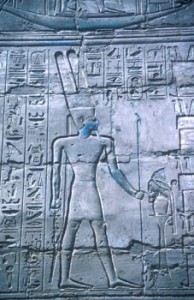
The decline of Kushite Empire
During the hundred years of ruling Egypt, Kush had extensively interacted with, and had influence upon, the Near East and the Far East, in politics, economy, and cultures. The impact of such interaction is still waiting deeper investigations. Nonetheless, apparently the Kushite culture had not witnessed big differences in basic norms and traditions.
Kushite Pharaoh, Dynasty 25, ca. 713–664B.C 
The golden age of Kush ended around 350 BC. The last known Kushite king to be buried under a Pyramid was Pharaoh Yesbokheamani. Since then grand building projects disappeared and large pyramids and temples seized to be established. The scarce archeological evidence suggests that after the fourth century BC, the kingdom of Kush had experienced extensive nomadic invasions from the surrounding deserts. In addition, the Kushite state used to endure some small-scale conflicts with the kingdom of Axum which was established around 300 BC.
Due to the dynamics of conflicts, migration, assimilation and other politico-demographic influences over the past seven millennia, the Kushitic population reduced to a small minority in Eritrea, Sudan, and Kenya while they are still majorities in Ethiopia, Djibouti and Somalia. In Ethiopia over 52% of the current population of 80 million are Kushitic peoples while almost the entire population in Somalia and Djibouti are Kushitic.
Since the late 1880s the majority of Kushites land in Eritrea and Ethiopia, has been annexed by the Abyssinian settlers and colonial invaders subjecting the Kushites to unrestrained economic exploitation and political subjugation for over 100 years. This resulted in putting the Kushites under huge restraints which led them primarily to focus their energy and human resources on fighting for survival and for defending their land from repeated aggressions of foreign invaders and colonial powers. Thus, nowadays the Kushites find themselves seen as minorities, excluded from participating in the political leadership, suffering great social, economic and political marginalization and injustice.

